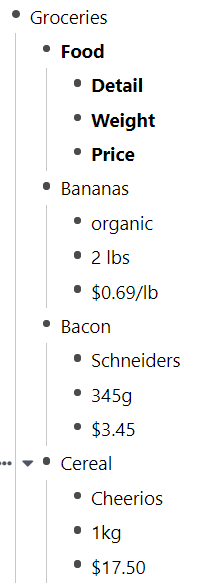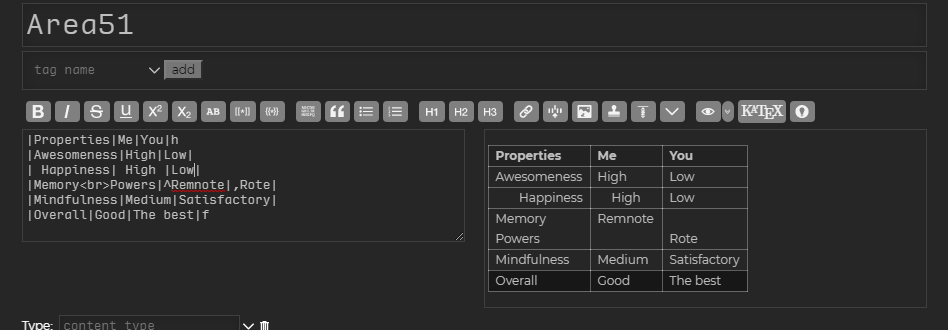Often there is content that can only be properly displayed in a table format (especially when you want to be able to see a large number of entries at the same time).
This is already in the roadmap. I’m creating this to have a single place where users can comment, suggest features and implementations on it.
Essential functionalities for me would be to be able to:
- Generate a table by (1) defining a search criteria and (2) choosing which slots are columns.
- Sort entries by column (ascending/descending)
- Add/remove/edit entries directly in the table (effectively the same as creating Rems)
Ideally this would allow users to have the equivalent of master databases (RemBases?), and include views to it for specific Rems.








